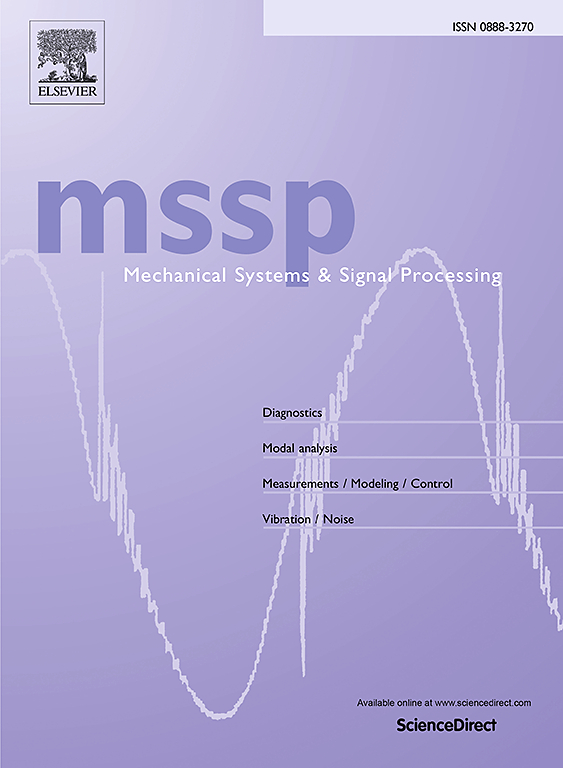A novel time-frequency analysis method of blade tip timing signals based on multiple measurement vectors
IF 7.9
1区 工程技术
Q1 ENGINEERING, MECHANICAL
引用次数: 0
Abstract
Rotating blades are vital components in turbomachinery, and accurate vibration measurement is critical for fault diagnosis and early warning. Non-contact blade vibration measurement techniques, such as blade tip timing (BTT), have gained substantial attention in academia and industry. However, limitations in sensor deployment often result in BTT signals that fail to meet the Nyquist sampling theorem, leading to undersampling signals. Sparse reconstruction methods have emerged as a solution to extract comprehensive blade vibration information from undersampled signals. However, existing sparse reconstruction methods of BTT signals based on the single measurement vector (SMV), exhibit poor robustness, amplitude underestimation, and susceptibility to frequency aliasing. To address these limitations, this paper proposes a time–frequency analysis method of BTT signals based on joint sparsity to achieve blade natural frequency tracking and frequency spectrum reconstruction. The existing SMV sparse reconstruction model of BTT signals is extended to the multiple measurement vectors (MMV) framework by constructing a measurement matrix and an undersampled displacement matrix composed of multiple measurement snapshot vectors. The joint sparsity constraint is introduced to the coefficient matrix, promoting the same sparsity pattern across the representations of neighboring measurement snapshot vectors. This method leverages the inherent structural sparsity of the BTT signal frequency spectrum, thereby improving the accuracy of the frequency spectrum reconstruction and enhancing resistance to noise interference. To verify the effectiveness of the proposed method, numerical simulations are conducted under different signal-to-noise ratio (SNR) levels to compare the relative amplitude errors and the mean square error. Finally, experimental results from a spinning test rig further demonstrate that the method offers superior resistance to frequency aliasing, significantly improves blade natural frequency tracking accuracy, and enhances the robustness and precision of vibration frequency spectrum reconstruction compared to two existing methods based on SMV. Additionally, comparing computational efficiency reveals the advantages of the proposed method in batch processing of data.
求助全文
约1分钟内获得全文
求助全文
来源期刊

Mechanical Systems and Signal Processing
工程技术-工程:机械
CiteScore
14.80
自引率
13.10%
发文量
1183
审稿时长
5.4 months
期刊介绍:
Journal Name: Mechanical Systems and Signal Processing (MSSP)
Interdisciplinary Focus:
Mechanical, Aerospace, and Civil Engineering
Purpose:Reporting scientific advancements of the highest quality
Arising from new techniques in sensing, instrumentation, signal processing, modelling, and control of dynamic systems
 求助内容:
求助内容: 应助结果提醒方式:
应助结果提醒方式:


